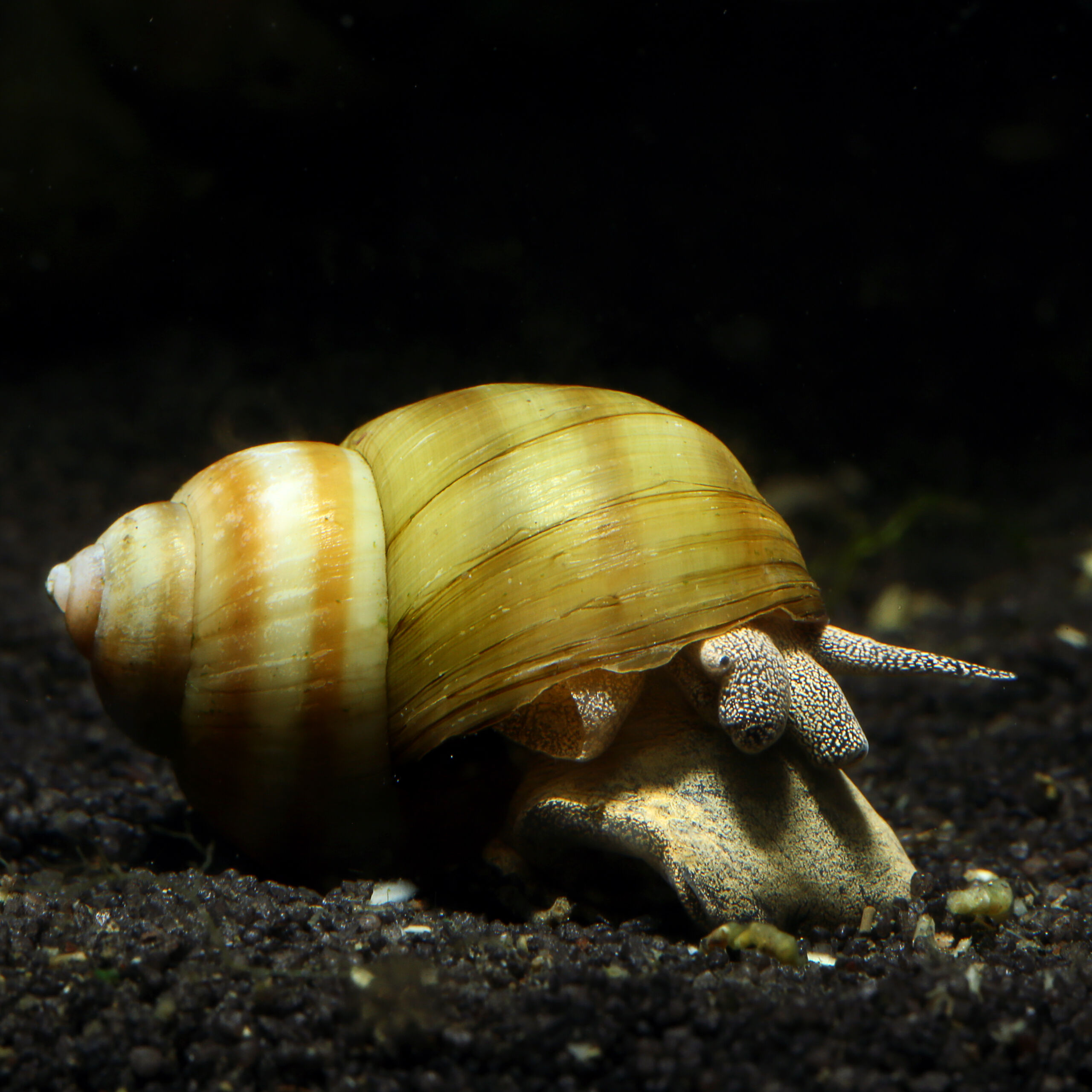Common River Snail
Viviparus viviparus
The Common River Snail is a valuable addition to both the aquarium and the garden pond.
- easy to maintain
- also suitable for the garden pond
- acts as a “health police”
1 in stock
 Delivery in a few working days
Delivery in a few working days
 Free shipping from €60 across Austria
Free shipping from €60 across Austria





Important data
Product description & details
The Common River Snail, Viviparus viviparus, is a freshwater snail native to Europe that occurs in moderately flowing streams and lakes. The twisted, slightly tapered shell of the Common River Snail has a yellow base color and dark yellow to chestnut brown stripes and reaches a length of about 4 cm. The snail’s foot is dark gray and covered in countless yellow speckles.
Care in the aquarium
The Common River Snail is easy and uncomplicated to care for. Due to its European origin, the Common River Snail is hardy and therefore suitable not only for keeping in cooler aquariums, but also in garden ponds. Overwintering is possible in ponds that are at least 80cm deep. In nature and also in the aquarium or pond, the Common River Snail fulfills an extremely useful and necessary role, namely that of the “health police”. By feeding on dead plant debris, carrion and leftover food, it prevents sediment from forming or pollutants from being dissolved in the water. Algae are also on the diet of this snail. As with most species of snails, medium to hard water is ideal, as the shell can be damaged if the water is too soft. The water should also be rich in oxygen and not exceed a maximum temperature of 25°C. Despite its size, the Common River Snail is not particularly assertive. This absolutely peaceful snail can easily be socialized with aquarium and pond animals that do not chase it or stress it too much.
Feeding
As a classic recycler of leftovers, Viviparus viviparus feeds on biofilm and algae growth as well as detritus (dead plant material, carrion, leftover food). As one of the few freshwater snail species, it is also able to filter food particles from the water. It can be fed a wide variety of commercial snail and shrimp food, green fodder and leaves. Especially in aquariums with rather soft water, we recommend giving food containing minerals to prevent damage to the housing.
Sexual characteristics and breeding
The reproduction of the Common River Snail takes place without any human support. The animals have separate sexes and can be identified by their antennae. In contrast to females, males have antennae of unequal thickness, as the right antenna, which is significantly thicker and shorter, functions as a copulation organ. As the Latin name suggests, the Common River Snail is viviparous. A single, fully developed baby snail, approximately 4-10 mm in size, is released from the mother approximately every 2 weeks.





